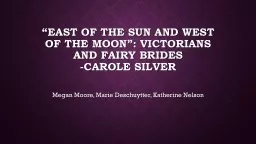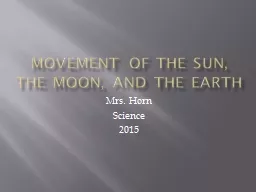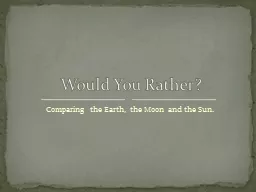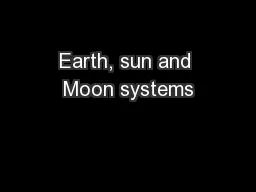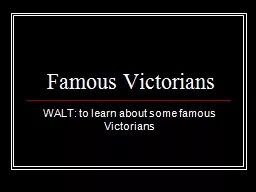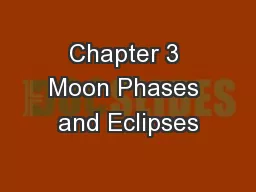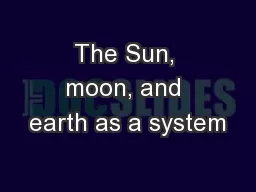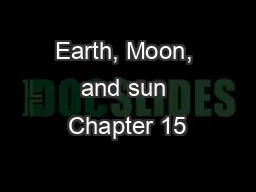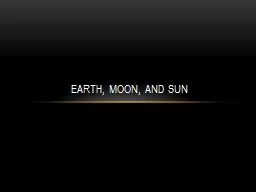PPT-“East of the sun and west of the moon”: Victorians and
Author : trish-goza | Published Date : 2017-03-25
Carole Silver Megan Moore Marie Deschuytter Katherine Nelson Swan Maiden S tory The name fairy bride comes from a relatively unknown fairy tale since it was very
Presentation Embed Code
Download Presentation
Download Presentation The PPT/PDF document "“East of the sun and west of the moon�..." is the property of its rightful owner. Permission is granted to download and print the materials on this website for personal, non-commercial use only, and to display it on your personal computer provided you do not modify the materials and that you retain all copyright notices contained in the materials. By downloading content from our website, you accept the terms of this agreement.
“East of the sun and west of the moon”: Victorians and: Transcript
Carole Silver Megan Moore Marie Deschuytter Katherine Nelson Swan Maiden S tory The name fairy bride comes from a relatively unknown fairy tale since it was very different from other fairy tales. The BIG Idea. Students will understand that the appearance of the moon changes in a predictable cycle as it orbits Earth and as Earth rotates on its axis.. Objective 1:. Explain patterns of changes in the appearance of the moon as it orbits Earth. . Made by: Grace Taggart. Size. Moon- The Moon is 3,475km. Earth- The Earth is 12,756 km. Sun- The Sun is 1,392,684 km . What types of landforms are there?. Moon- The Moon is made out of hard rocks and there are many craters and mountains.. Mrs. Horn. Science. 2015. Day and Night. Earth’s axis is an imaginary line that runs through Earth.. It passes through the North and South poles.. Earth rotates (spins) on its axis. (Like a spinning top). By : Zora Reyes. Size. The . Moon . is 3475 km. The . Earth . 3959 km . The . Sun . is 1392000 km. The . Sun . is really , small if you look at all of the others stars . Surface. The . Moon . has craters the . Would You Rather?. Would you rather live here…. or here?. There is no water on the Moon. What would you drink?. Is there water on the Sun?. Would you rather live here…. or here?. The Sun is about 5500° Celsius. Make sure you bring sunscreen!!. The . Sun. Is HOT!!!. The sun is an . average . star . The heat and light are the result of . Nuclear Reactions . constantly taking place in the sun.. It is in the . center. of our solar system. . Comparison . By Jason Janczak. SIZE OF THE EARTH, MOON, AND SUN. The Earth’s radius is 3959 miles. The Moon’s radius is 1079 miles . The Sun’s radius is 432,474 miles. Fun facts: The Earth is about 4 times the size of the . WALT: to learn about some famous Victorians. Can you think of any famous Victorians?. Queen Victoria. She was born in 1819 in London. When she was 18 years old she became queen . She married her handsome cousin Albert a young prince from Germany (she proposed to him). By: Ava Schwartz . Size:. Earth:. The Earth is about One Million times smaller than the sun leaving it at 3,959 miles across.. Moon:. The. . Moon is 50 times smaller than the Earth leaving it at . The Sun. . . .. Which one is the biggest?. The Earth. Diameter of the Sun: 864,938 miles. Diameter of Earth: . 7,926 . miles. Diameter of the Moon: 2,160 miles. The Moon. How far away are the Sun and the Moon?. 0. Guidepost. In this chapter, you will consider four important questions about the Moon. Why does the moon go through phases?. What causes a lunar eclipse?. What causes a solar eclipse?. How can eclipses be predicted?. Section 22C. The sun’s motions. Apparent motion. The sun’s motion across the sky as we see it. Caused by the earth’s rotation. Ecliptic – the line marking the apparent path of the sun against the background of the stars as the sun moves around the earth.. Section 1: Earth in Space. Pg. 514 . Basics. The study of the moon, stars and other objects in space is . Astronomy. .. The earth moves in 2 ways. Rotation. Revolution. Rotation. The spinning of the earth on it’s axis. Earth, Moon, and Sun Gravity and Motion Isaac Newton was the first scientist to explain what keeps the Earth and Moon in orbit Force – a push or a pull There is a force acting between the Earth and the moon that keeps them in orbit
Download Document
Here is the link to download the presentation.
"“East of the sun and west of the moon”: Victorians and"The content belongs to its owner. You may download and print it for personal use, without modification, and keep all copyright notices. By downloading, you agree to these terms.
Related Documents

